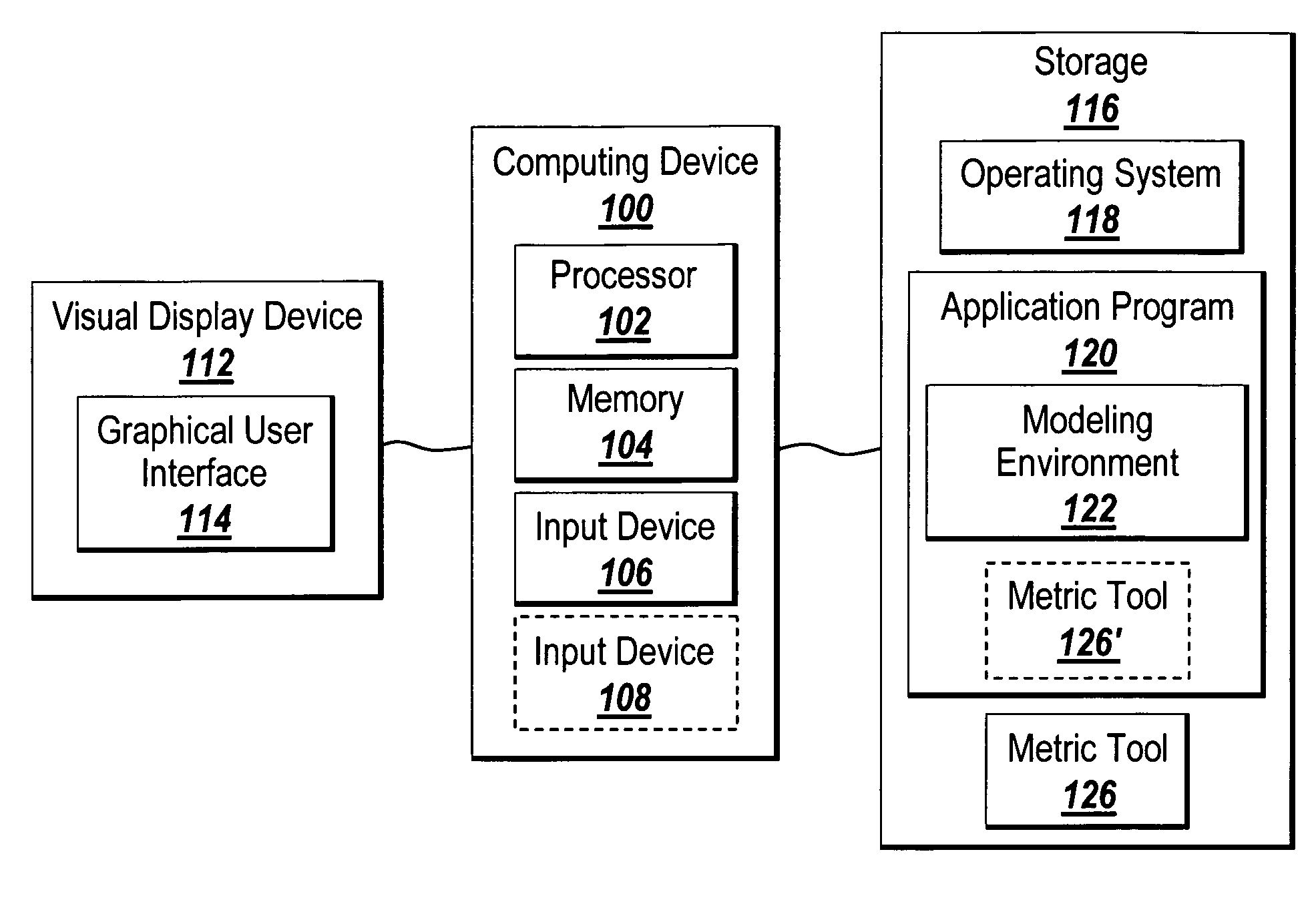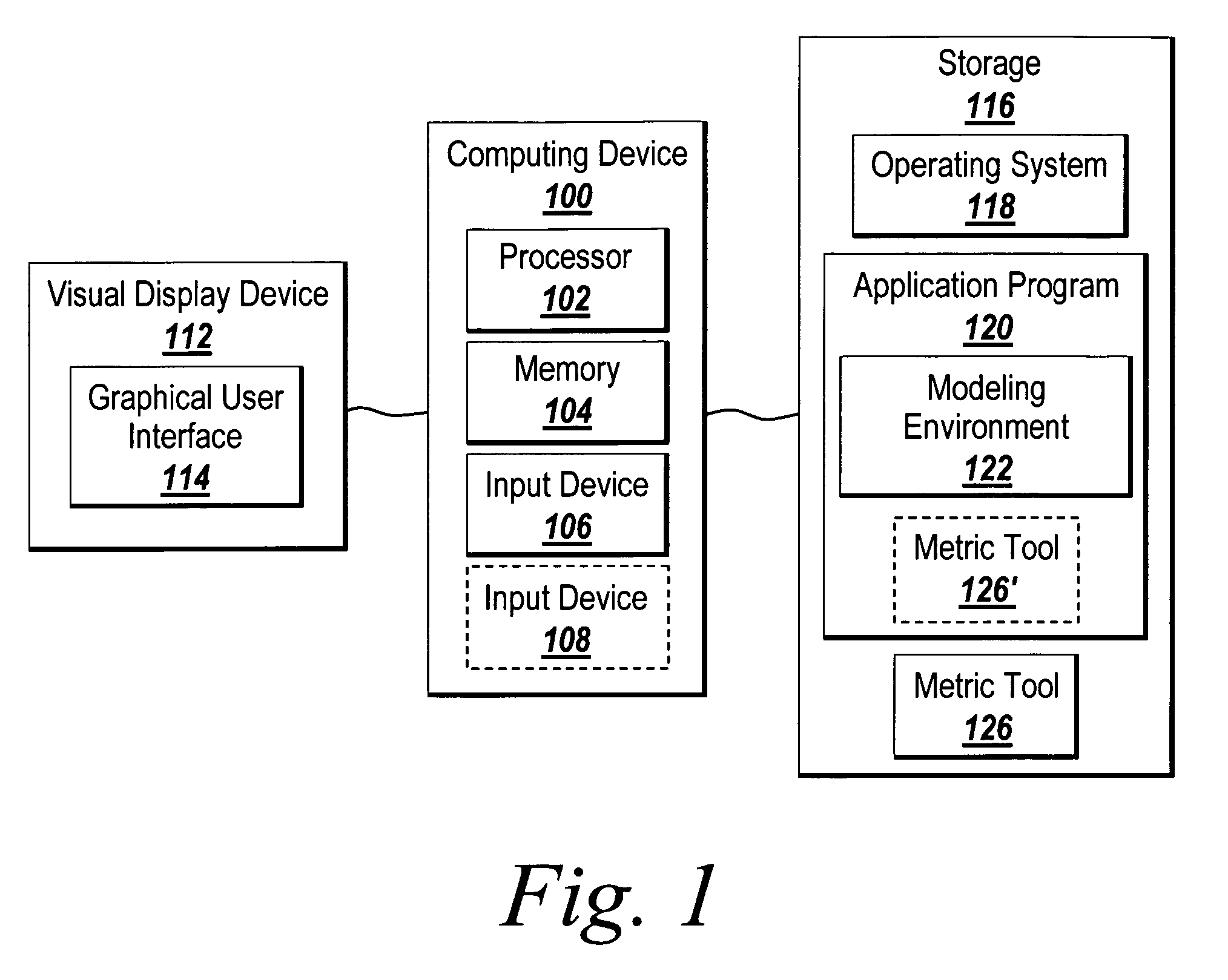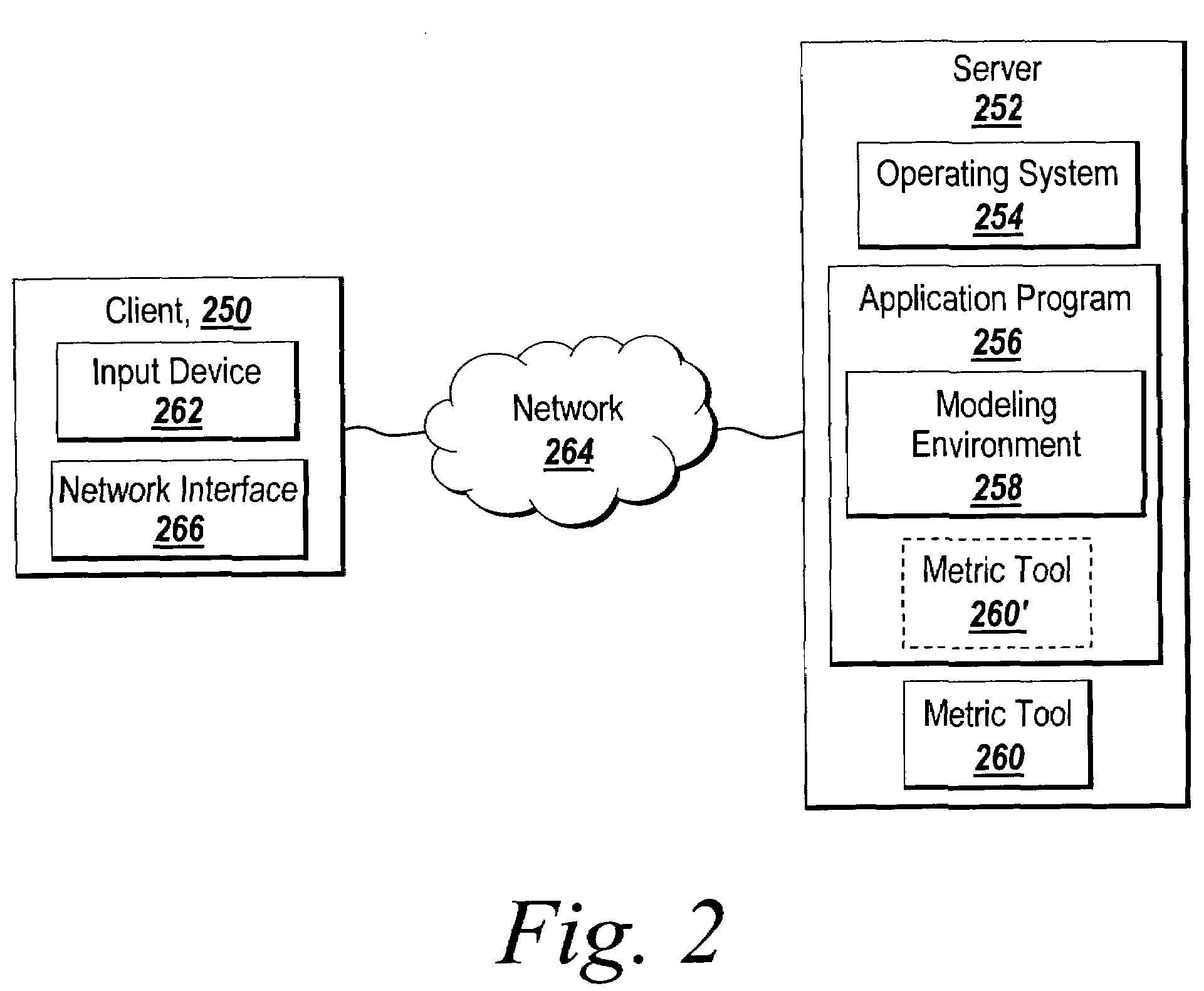Measuring productivity and quality in model-based design
a technology of model-based design and productivity measurement, applied in the direction of instruments, nuclear elements, nuclear engineering, etc., can solve the problem that the content of a model alone is not a good measure of effort, and achieve the goal of identifying efficiency and quality of work, balancing workload, and controlling work quality
- Summary
- Abstract
- Description
- Claims
- Application Information
AI Technical Summary
Benefits of technology
Problems solved by technology
Method used
Image
Examples
Embodiment Construction
[0041]Certain embodiments of the present invention are described below. It is, however, expressly noted that the present invention is not limited to these illustrated embodiments, but rather the intention is that additions and modifications to what is expressly described herein also are included within the scope of the invention. Moreover, it is to be understood that the features of the various embodiments described herein are not mutually exclusive and can exist in various combinations and permutations, even if such combinations or permutations are not expressly made herein, without departing from the spirit and scope of the invention.
[0042]The illustrated embodiments of the present invention provide a method and system for measuring quality of work, effort and productivity of a user. The illustrated embodiment of the present invention also provides means for balancing workload, creating predictable schedules and budgets, and controlling quality of work for an organization. In one ...
PUM
 Login to View More
Login to View More Abstract
Description
Claims
Application Information
 Login to View More
Login to View More - R&D
- Intellectual Property
- Life Sciences
- Materials
- Tech Scout
- Unparalleled Data Quality
- Higher Quality Content
- 60% Fewer Hallucinations
Browse by: Latest US Patents, China's latest patents, Technical Efficacy Thesaurus, Application Domain, Technology Topic, Popular Technical Reports.
© 2025 PatSnap. All rights reserved.Legal|Privacy policy|Modern Slavery Act Transparency Statement|Sitemap|About US| Contact US: help@patsnap.com



